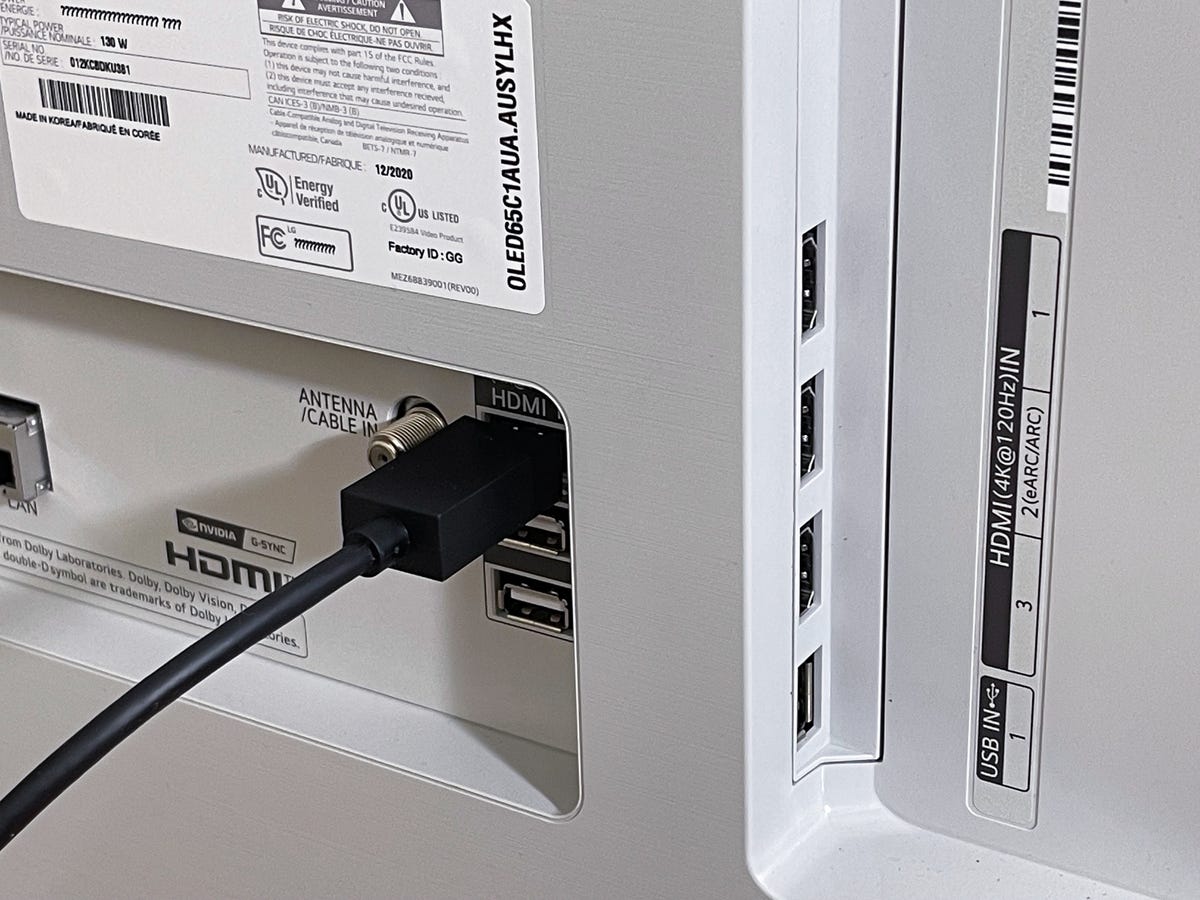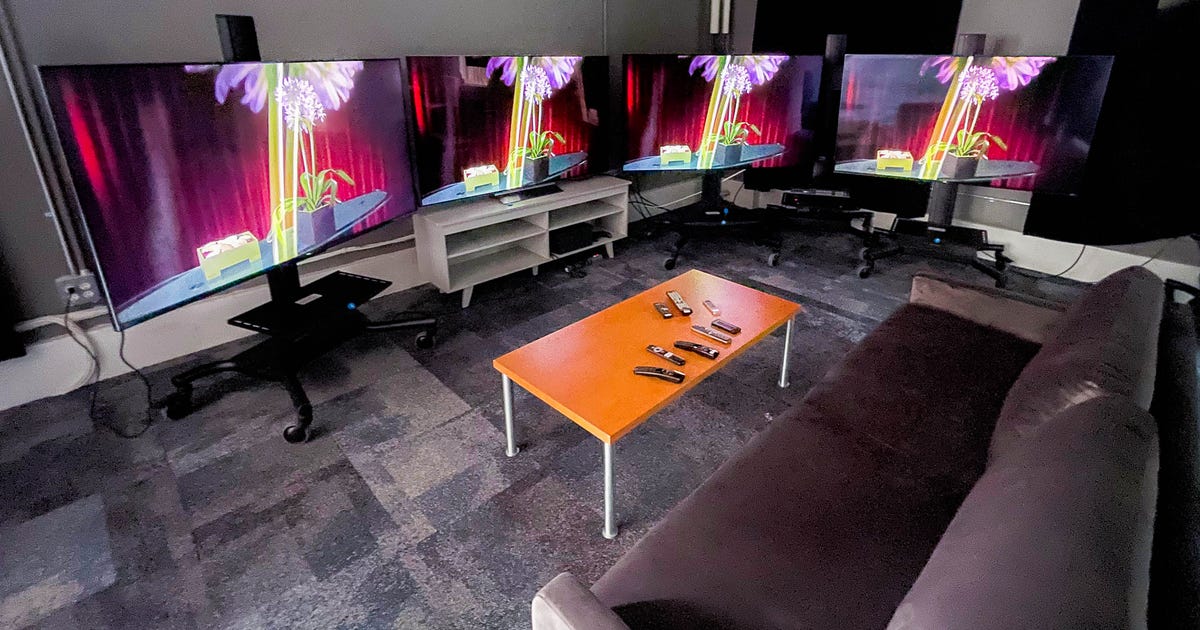
4K and 8K TV refresh rates from 60hz to 120Hz: Everything you should know
Refresh rate is one of the more confusing aspects of TV technology and TV makers don't do much to explain it. In fact, they often obscure it.
Refresh rate is a number that specifies how many times per second the image on your TV changes. With most TVs it's 60, though it's rare you'll ever see a TV with that number listed. Instead, manufacturers use different technologies, such as the soap opera effect and black frame insertion, to claim a higher number. Sometimes those claims are justified, sometimes they aren't.
Higher refresh rate claims with numbers like 120, 240 and higher are common, but not always accurate. In fact, no matter what number you see listed with a 4K TV, no 4K TV has a native panel refresh rate higher than 120Hz. As we'll explain, though, a number higher than 120Hz doesn't necessarily mean the claim is false.
Here's the basics:
- Refresh rate is the number time times per second (written in hertz, or Hz) a TV refreshes its image.
- Movies are almost always filmed 24 frames per second, or 24Hz. Live TV shows at 30 or 60.
- Most TVs refresh at 60, some midrange and higher-end models at 120. Some older 1080p LCD TVs refreshed at 240Hz.
- One benefit of a higher refresh rate is to reduce the motion blur inherent in all current TV technologies.
- Motion blur is the softening of the image when an object, or the entire screen, is in motion.
- Another benefit is compatibility with 120 frame-per-second signals from PlayStation 5, Xbox Series X and some video cards.
- TV manufacturers use multiple technologies in addition to refresh rate to come up with an "effective refresh rate."
- Effective refresh rate means the TV refreshes its image at a lower rate, but might appear to have similar motion resolution as a TV with an actual higher refresh rate.
What TV makers say
Let me start with the terms you'll see on various TV makers' marketing materials and web sites. Each one calls the TVs motion handling capability something different, and many don't even mention the term "refresh rate" or use "Hz" at all.
LG: TruMotion
LG's web site lists the panel's native refresh rate up front. On TVs that have a 120Hz refresh rate it simply says "120Hz Native," while with 60Hz models it lists "TruMotion 120 (60Hz Native)."
Samsung: Motion Rate
Samsung is better than it used to be about this, albeit not as transparent as LG. The 4K TVs and 8K TVs on its site list a "Motion Rate." This is, generally, twice the native refresh rate. So Motion Rate 240 indicates a native refresh of 120Hz while Motion Rate 120 means a 60Hz refresh. In the least expensive of their TVs, a Motion Rate of 60 means a 60Hz refresh.
Sony: MotionFlow XR
For most of its 2021 TVs Sony doesn't list a number on its website, instead it just says "Motionflow XR." On some, however, it lists a number along with the native refresh: "Motionflow XR 240 (native 60 Hz)" and "Motionflow XR 960 (native 120 Hz)."
Vizio: Refresh Rate
Vizio used to list an "Effective Refresh Rate" on its web site, which was just double the native refresh rate. For 2021, however, none of its TVs use that term as far as we could find, and most don't list any refresh rate spec. The bottom line? All of Vizio's 2021 TVs are 60Hz native, except for the P-Series and the H1 OLED, which are 120Hz native.
TCL: Clear Motion Index or Natural Motion
TCL's sets are all over the place. Some don't list any motion term -- those are 60Hz native. Some say "120Hz CMI," which stands for Clear Motion Index, but they're actually 60Hz native too. And some say Natural Motion 240, but they're 60Hz as well. The only TCL TVs that are true 120Hz say Natural Motion 480.
For the most effective increase in motion resolution, and compatibility with next-gen gaming consoles' best video output modes, you need a native 120Hz refresh television. That said, it is possible to have some improvement in motion resolution even with a 60Hz TV if it uses some other feature, like backlight scanning or black frame insertion, that improves motion resolution.
That's a lot of technical jargon, so let's tackle it from the beginning.
Back up a second: What's refresh rate?
Refresh rate is how often a TV changes the image (also known as a "frame") onscreen. With traditional televisions, this was 60 times each second, or "60Hz."
Some modern TVs can refresh at double this rate, or 120Hz (120 frames per second). We've covered this before, with 1080p HDTVs, and it's the same idea with 4K TVs. Certain parts of the world have TVs that refresh at 50Hz normally, with some TVs that refresh at 100Hz. That just depends on the electricity in your country.
For the purposes of this article, 50 and 60 work the same, as do 100 and 120. For my own sanity, and ease of reading, I'm going to stick with 60 and 120, but feel free to read that as 50 and 100 if you're in the UK, Australia or any place that has 50Hz electricity.
So are these higher refresh numbers just another "more is better!" marketing ploy? Not entirely. Higher refresh rates can reduce motion blur in LCDs and OLED TVs.
What's motion blur? Glad you asked...
Your brain on blur
All LCD and current OLED models suffer from "motion blur." This is where anything in motion, either an object on screen or the entire image (like when the camera pans), blurs and looks softer than if it was stationary.

Motion blur makes images in motion look softer than stationary ones.
Geoffrey Morrison/CNETInterestingly, this blur is largely created by your brain. Basically, your brain notices the motion, and makes assumptions as to where that object (or overall image) is going to be in the next fraction of a second. The problem with LCD and current OLED TVs is that they hold that image there for the full 60th of a second, so your brain actually smears the motion, thinking it should be moving, when in fact it's just a series of still images.
It's actually quite fascinating, but the details are beyond the scope of this article. I recommend checking out BlurBuster's great article for more info.
The motion blur we're talking about here, despite coming from your brain, is caused by how the television works. This is separate from whatever blur the camera itself creates.
Some people aren't bothered by motion blur. Some don't even notice it. Others, like me, do notice it and are bothered by it. Fortunately, it can be minimized.

One sure sign of a native 120Hz TV? The ability to accept a 4K/120Hz input.
David Katzmaier/CNETAntiblurring technologies beyond refresh rate
Refresh rate itself is really only part of the solution. Just doubling the same frames doesn't actually do much for reducing motion blur. Something else is needed.
There are two main methods. The first is frame interpolation, where the TV itself creates brand-new frames that are sort of hybrids of the frame that came before, and the one that comes after. This can fool your brain enough that it doesn't blur the image. Depending how aggressive the interpolation is, however, it can lead to the soap opera effect, which makes movies look like ultra-smooth reality TV shows. Some viewers like the effect, but it's generally hated by film buffs and others who pay close attention to image quality.
There are different levels of this processing, where a little might reduce motion blur some, and not cause undue harm to the quality of the image. Or on the other end of the "dial," it's cranked up so that there's even less motion blur, but the movement is hyper-realistic and for many, distractingly unreal. Some TVs let you choose how much of this processing gets applied to the image, others have just a single setting. More on these settings further down.
The other alternative is black frame insertion (BFI) or a scanning backlight. This is where all or part of the backlight of the TV turns off (goes black). This effectively means the image doesn't "hold" in place, so your brain doesn't blur it. Do it poorly, however, and many people will see the image flicker. The light output of the TV also drops, as it's not outputting any light for a period of time.
Both of these techniques are what manufacturers use to come up with their "effective refresh rate" numbers. For example, a TV with a 60Hz refresh and a scanning backlight might claim to have an effective refresh rate of 120. A TV with a more elaborate BFI mode, and frame interpolation, might have a claimed effective refresh rate of "540." There's no transparency in how companies determine their "effective rate" numbers, but there is at least more consistency than there used to be.
It's also possible these features, when enabled, are bothersome over time. Some people are especially sensitive to a flickering backlight, so you might need to turn these features off. If you're concerned about that, or notice motion blur, it's best to find a TV that actually has a 120Hz refresh rate.
Bottom line (should you care?)
There are two things at play here. The first is simple, and one we've said many times before: don't trust marketing. At least, don't trust it at face value. Marketing is designed to sell you a product, not give you information about a product. That's secondary.
The second is being able to reduce motion blur. When 120Hz 1080p TVs first hit the market, they offered a noticeable improvement in motion resolution. The technology has only gotten better.
But if you're sensitive to motion blur, or you want to get the most from your Xbox Series X or PlayStation 5, it is worth checking for a true 120Hz TV. It would be a shame to let all that extra 4K resolution go to waste due to blur. It's also worth checking reviews for measurements and subjective takes on how the TV handles motion -- that's more useful than any manufacturer-supplied spec.
Note: This article was originally published in 2015 but has been updated regularly since.
Got a question for Geoff? First, check out all the other articles he's written on topics such as why you shouldn't buy expensive HDMI cables, TV resolutions explained, how HDR works and more.
Still have a question? Tweet at him @TechWriterGeoff, then check out his travel adventures as a digital nomad on Instagram and YouTube. He also thinks you should check out his best-selling sci-fi novel about city-sized submarines and its sequel.
Source
Tags:
- Tv Refresh Rate 60hz Vs 120hz
- Best 4k Tv With 120 Refresh Rate
- Does Refresh Rate Matter On 4k Tv
- Sony 4k Tv Refresh Rate
- Best Refresh Rate For 4k
- Best 4k Tv With 240hz Refresh Rate
- Does Refresh Rate M atter On 4k Tv
- Difference Between 8k And 4k Tv
- 4k And 8k Resolution
- 4k Android Tv
- 4k Android
- 4k And 1080p Difference

